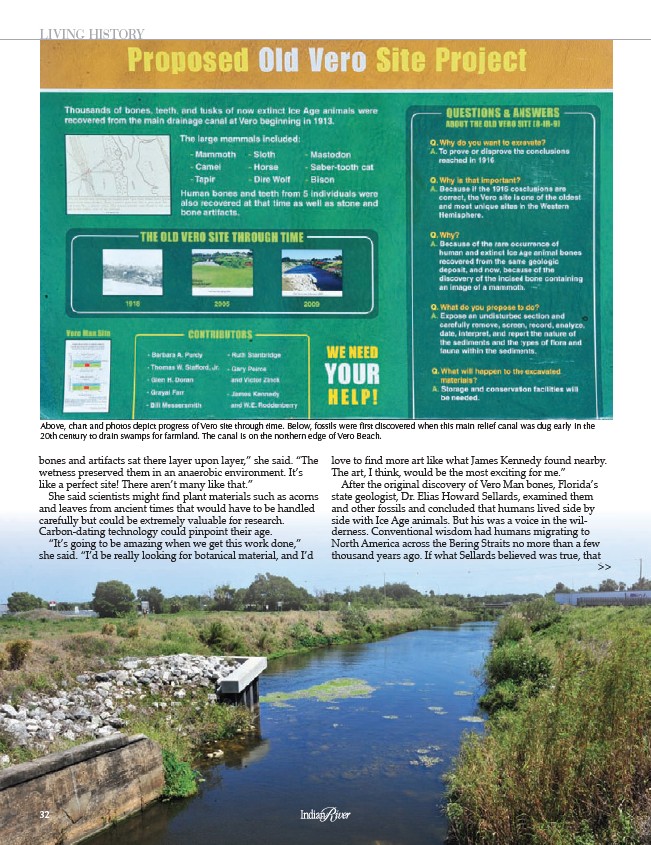
LIVING HISTORY
bones and artifacts sat there layer upon layer,” she said. “The
wetness preserved them in an anaerobic environment. It’s
like a perfect site! There aren’t many like that.”
She said scientists might find plant materials such as acorns
and leaves from ancient times that would have to be handled
carefully but could be extremely valuable for research.
Carbon-dating technology could pinpoint their age.
“It’s going to be amazing when we get this work done,”
she said. “I’d be really looking for botanical material, and I’d
32
love to find more art like what James Kennedy found nearby.
The art, I think, would be the most exciting for me.”
After the original discovery of Vero Man bones, Florida’s
state geologist, Dr. Elias Howard Sellards, examined them
and other fossils and concluded that humans lived side by
side with Ice Age animals. But his was a voice in the wilderness.
Conventional wisdom had humans migrating to
North America across the Bering Straits no more than a few
thousand years ago. If what Sellards believed was true, that
>>
Above, chart and photos depict progress of Vero site through time. Below, fossils were first discovered when this main relief canal was dug early in the
20th century to drain swamps for farmland. The canal is on the northern edge of Vero Beach.